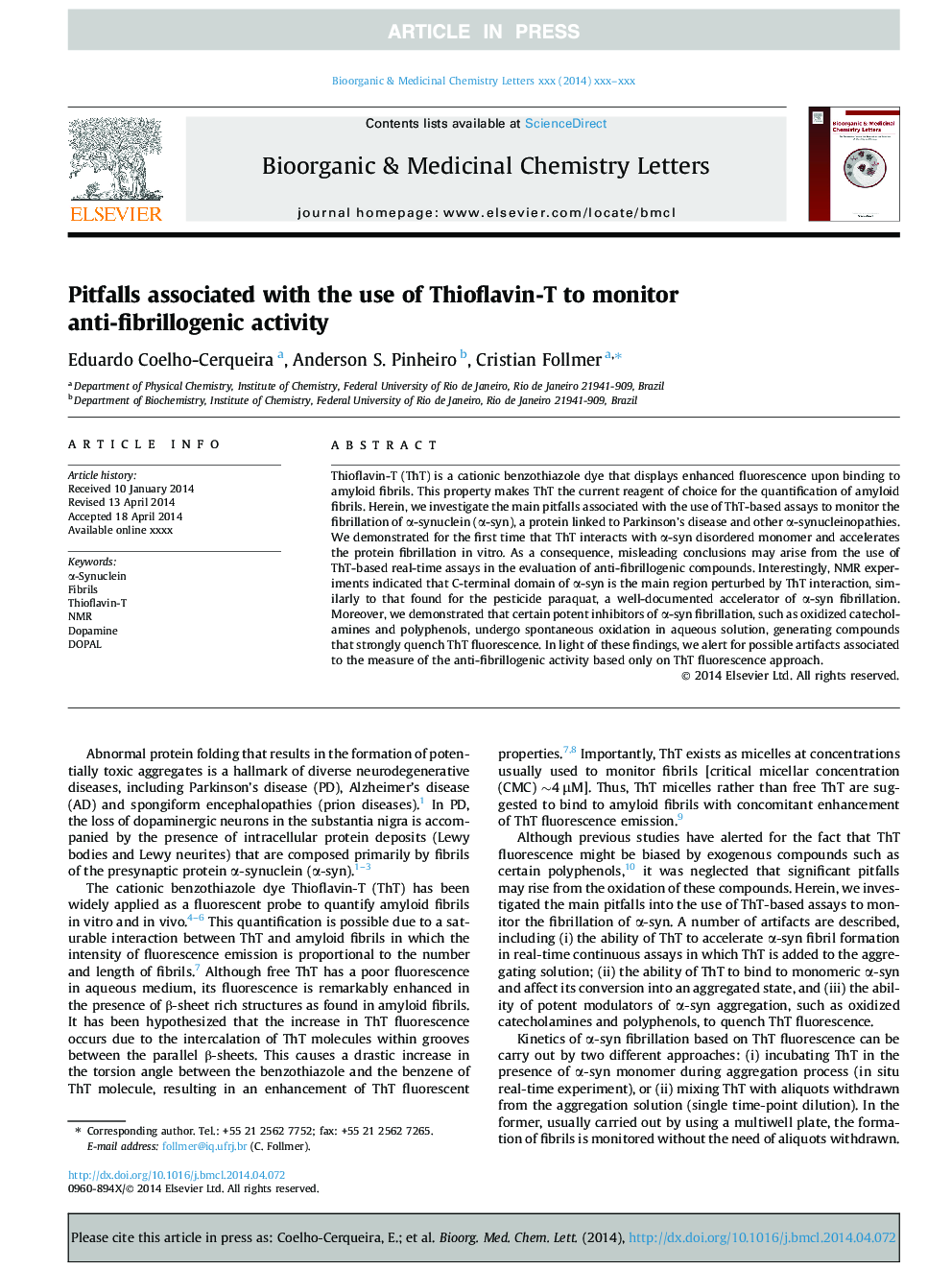| Article ID | Journal | Published Year | Pages | File Type |
|---|---|---|---|---|
| 10591815 | Bioorganic & Medicinal Chemistry Letters | 2014 | 5 Pages |
Abstract
Thioflavin-T (ThT) is a cationic benzothiazole dye that displays enhanced fluorescence upon binding to amyloid fibrils. This property makes ThT the current reagent of choice for the quantification of amyloid fibrils. Herein, we investigate the main pitfalls associated with the use of ThT-based assays to monitor the fibrillation of α-synuclein (α-syn), a protein linked to Parkinson's disease and other α-synucleinopathies. We demonstrated for the first time that ThT interacts with α-syn disordered monomer and accelerates the protein fibrillation in vitro. As a consequence, misleading conclusions may arise from the use of ThT-based real-time assays in the evaluation of anti-fibrillogenic compounds. Interestingly, NMR experiments indicated that C-terminal domain of α-syn is the main region perturbed by ThT interaction, similarly to that found for the pesticide paraquat, a well-documented accelerator of α-syn fibrillation. Moreover, we demonstrated that certain potent inhibitors of α-syn fibrillation, such as oxidized catecholamines and polyphenols, undergo spontaneous oxidation in aqueous solution, generating compounds that strongly quench ThT fluorescence. In light of these findings, we alert for possible artifacts associated to the measure of the anti-fibrillogenic activity based only on ThT fluorescence approach.
Related Topics
Physical Sciences and Engineering
Chemistry
Organic Chemistry
Authors
Eduardo Coelho-Cerqueira, Anderson S. Pinheiro, Cristian Follmer,
